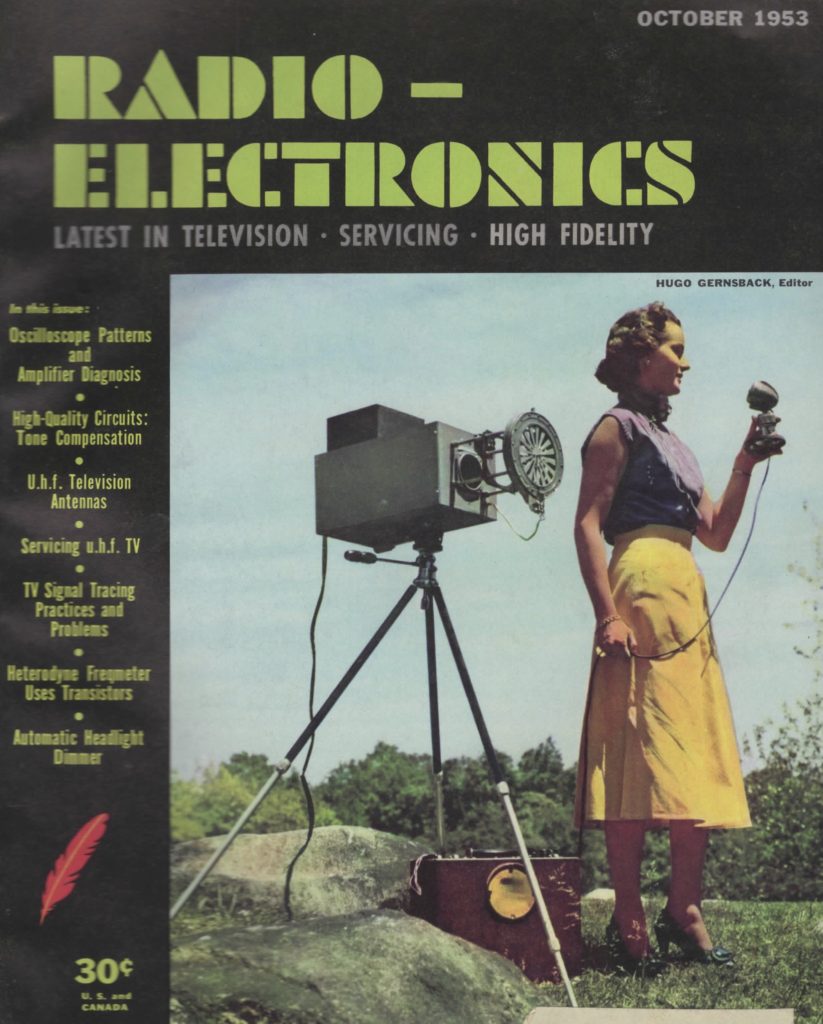
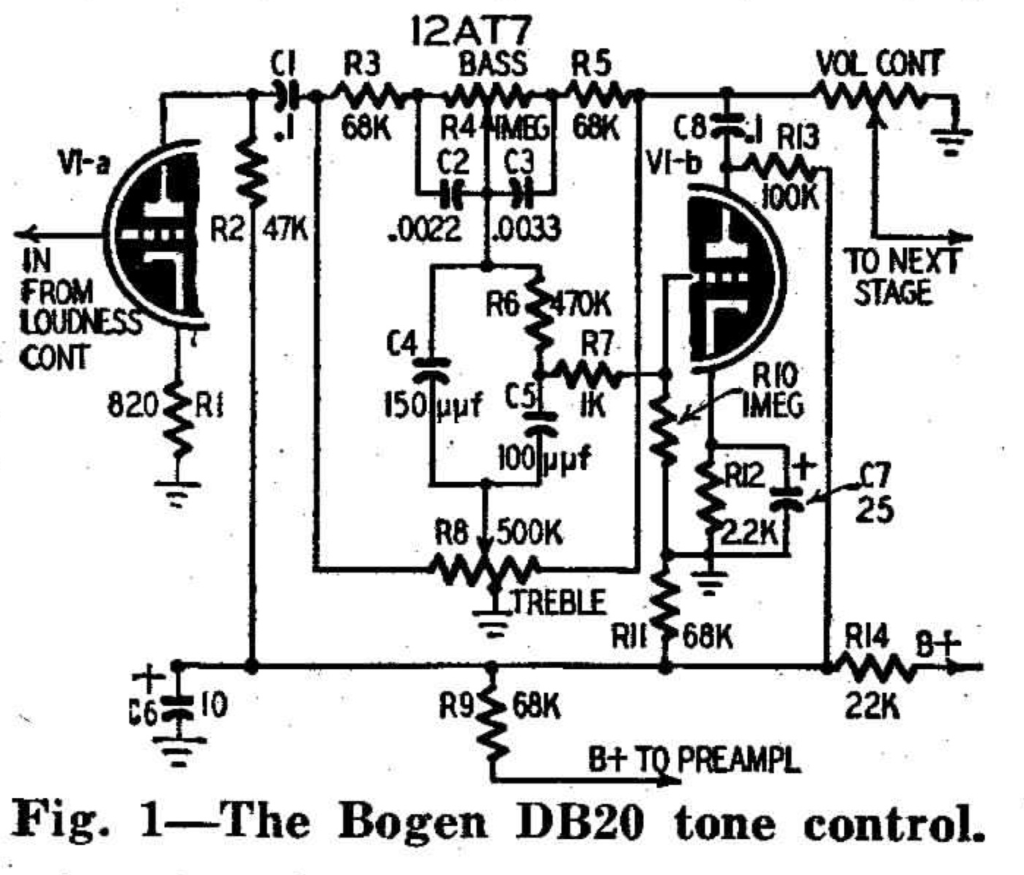
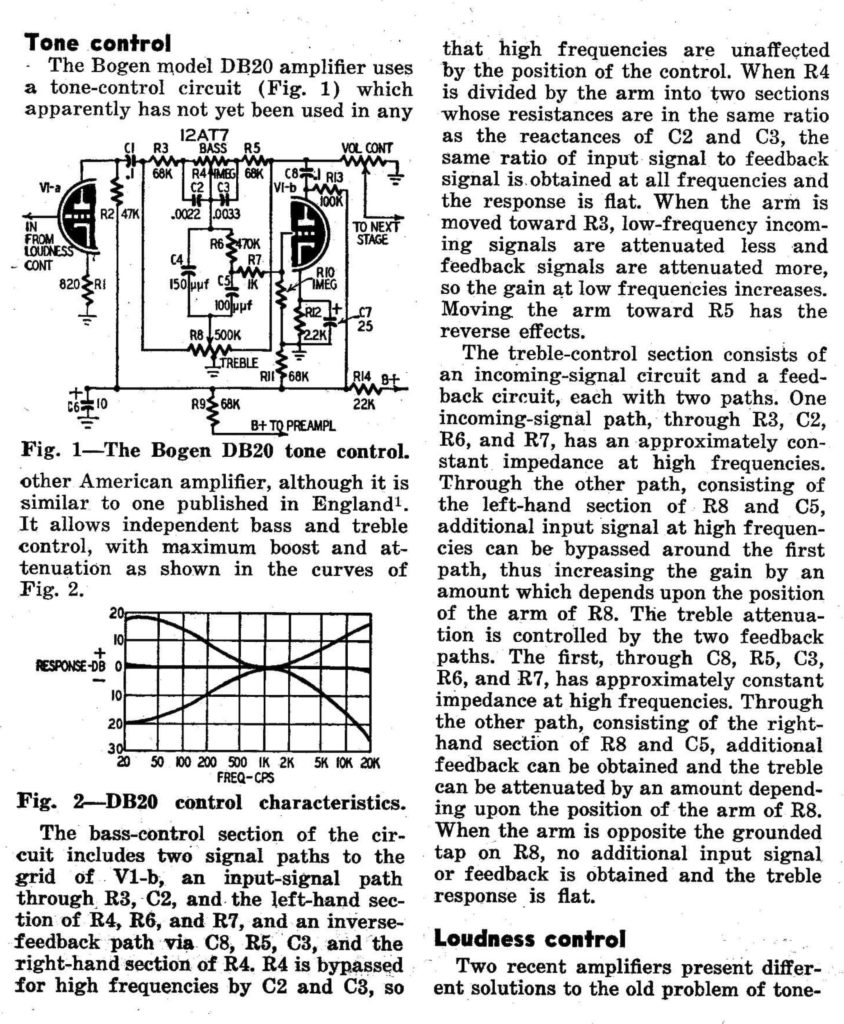



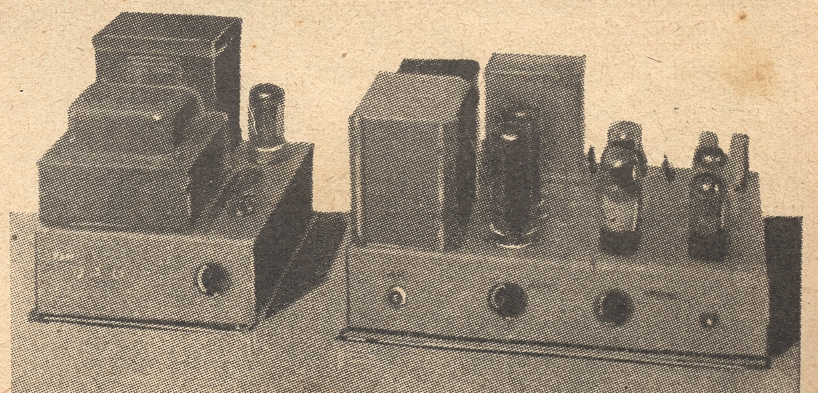 Many years ago I published this article abt digging for ancient audio ephemera in Buenos Aires. Reader N. Dinapoli Farina uncovered some related materials and has shared them with us here. I believe that the magazine may have been called “Radio Chassis Television” and the scans below are all from the late 1950s. Click on the images for hi-res. Enjoy!
Many years ago I published this article abt digging for ancient audio ephemera in Buenos Aires. Reader N. Dinapoli Farina uncovered some related materials and has shared them with us here. I believe that the magazine may have been called “Radio Chassis Television” and the scans below are all from the late 1950s. Click on the images for hi-res. Enjoy!
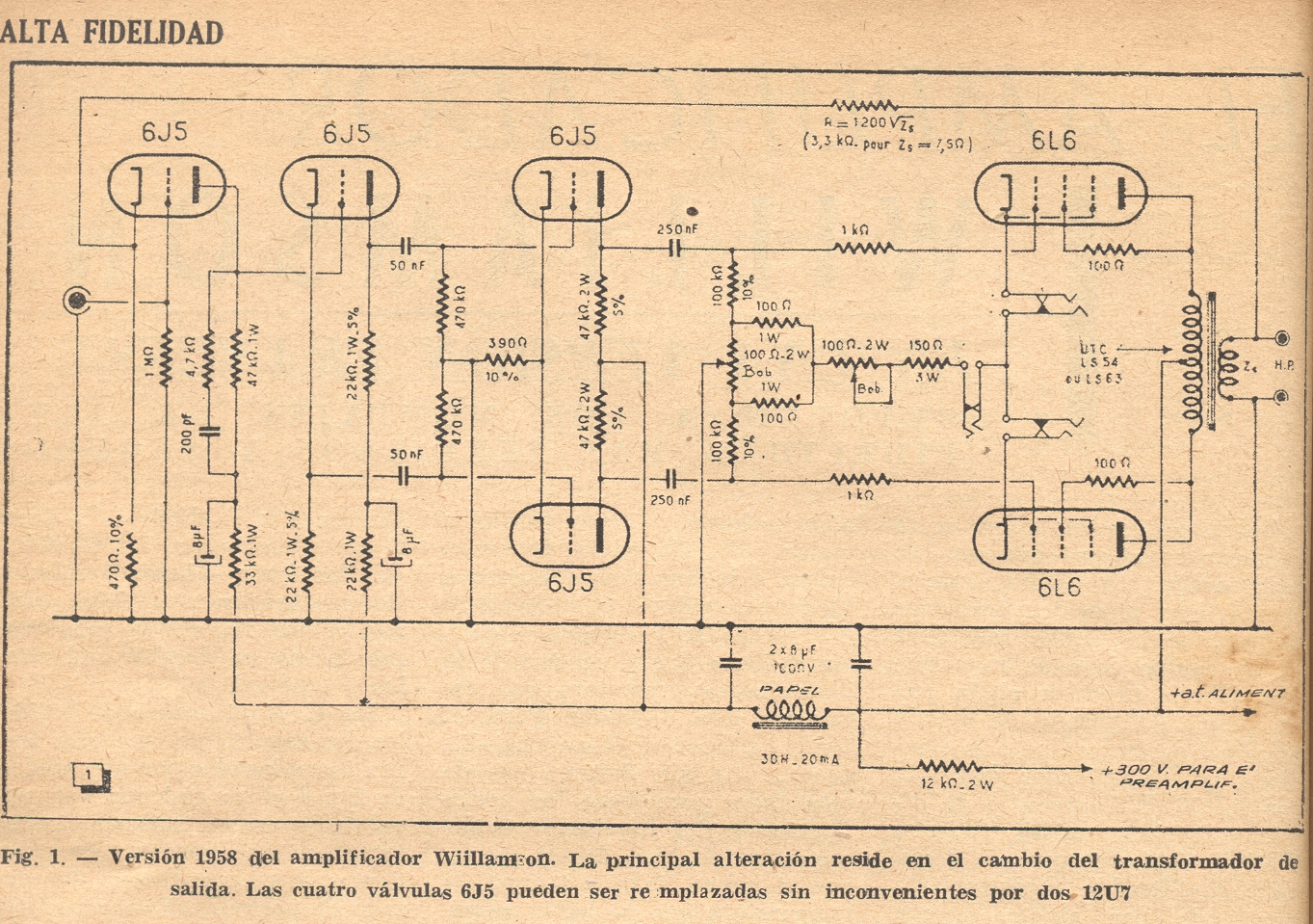
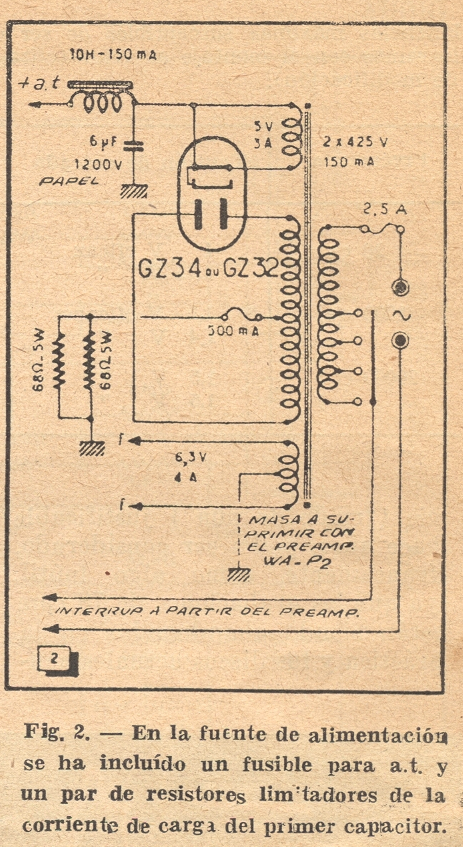 Above: Williamson style amp and power supply.
Above: Williamson style amp and power supply.
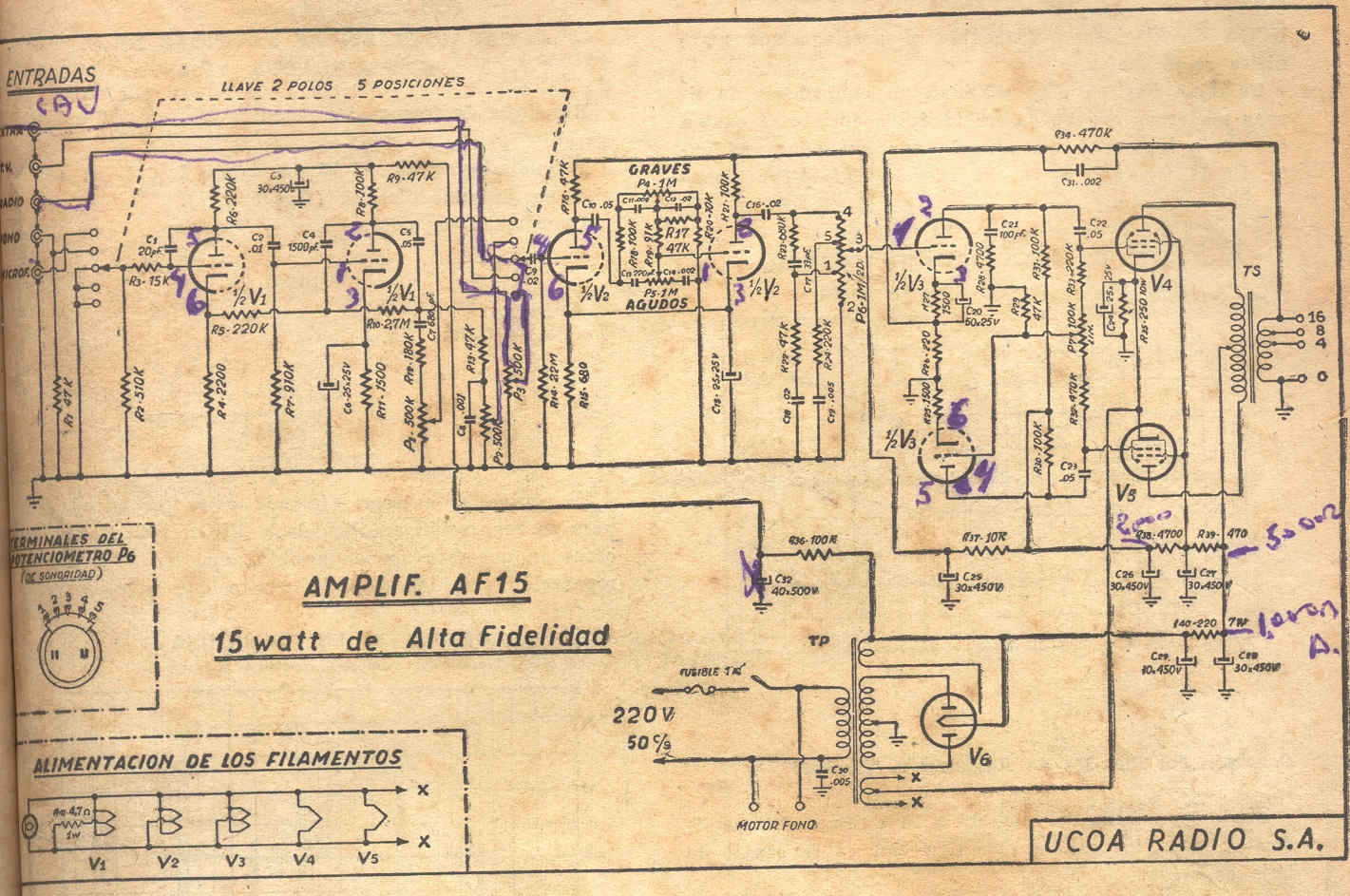 Fifteen-watt “Alta Fidelidad” amplifier.
Fifteen-watt “Alta Fidelidad” amplifier.
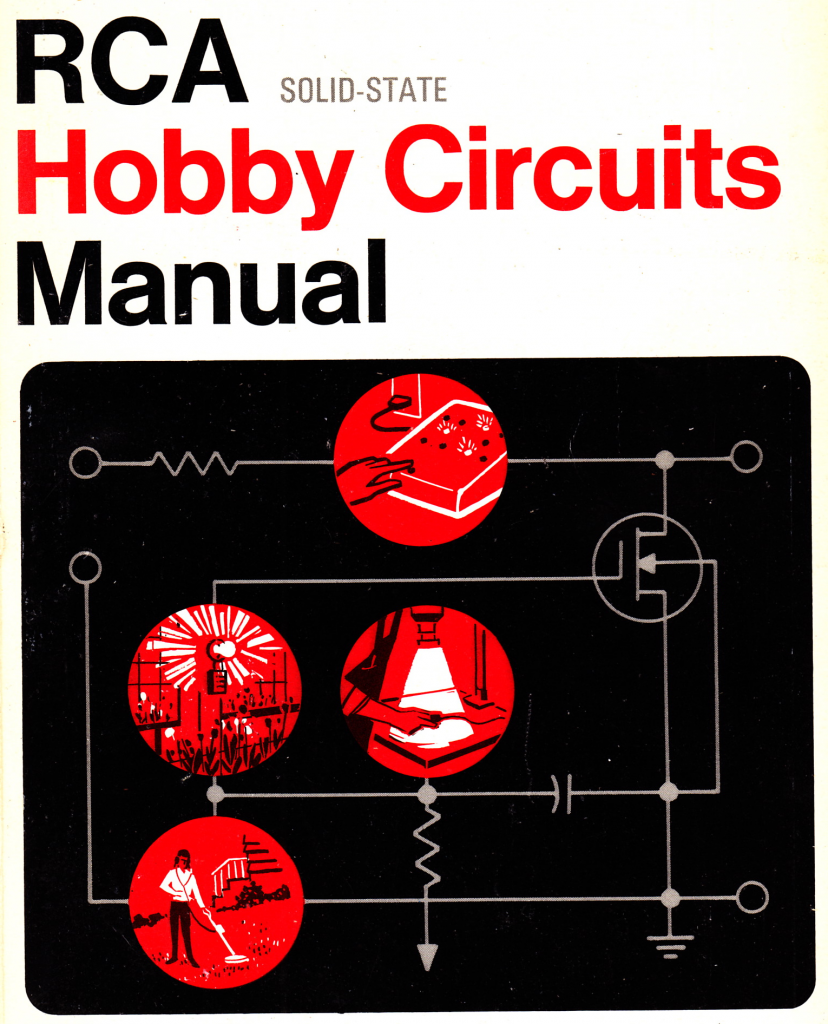 I’d never been particularly interested in learning solid state electronics. There just didn’t seem much point; considering that you can buy a 4-channel Sytek mic preamp for $900, there just ain’t much to motivate anyone to DIY ss kit. Tube stuff is another matter – it’s a different sound, and well-made ‘real’ high-plate-voltage, transformer i/0 tube gear is super-expensive. So I learned to make the tube gear both for my own studio and as a way to make some add’l income by custom-building for other engineers.
I’d never been particularly interested in learning solid state electronics. There just didn’t seem much point; considering that you can buy a 4-channel Sytek mic preamp for $900, there just ain’t much to motivate anyone to DIY ss kit. Tube stuff is another matter – it’s a different sound, and well-made ‘real’ high-plate-voltage, transformer i/0 tube gear is super-expensive. So I learned to make the tube gear both for my own studio and as a way to make some add’l income by custom-building for other engineers.
All that being said, there is an undeniable appeal to be able to build something useful that doesn’t require a heater circuit and the attendant 60-cycle-hum battles that come from those hi-current windings. Solid state is just easier, which is prolly why it has won-out in the world of consumer electronics, if not necessarily in the pro-audio world. In my endless diggin for ancient tubes and transformers and bakelite meters I invariably come across stashes of ole germanium and silicon transistors, and I recently decided to take the plunge and try and cross this bridge once and for all. Cos I can talk tubes and tube audio circuits up+down, but frankly I don’t know shit abt solid-state and maybe it’s time I learned.
DOWNLOAD THREE CIRCUITS FROM RCA HM-80:RCA_SS_Hobby_1968
The old RCA Tube Manuals have always been my primary source of information for my tube-audio builds and experiments. The circuits that they recommend are the most solid, reliable, and practical that you will ever find. I trust them implicitly. And why not? After all, this was the company that made the tubes themselves! So when I decided to try and get into SS, I started with the RCA Solid-State Hobby Circuits Manual. In the scan above you will find a mic preamp, a line-level compressor, and a fuzz pedal. I’ll be building all three eventually and I will LYK how it goes. In the meantime, if any of y’all beat me to it, drop us a line and report back,,,
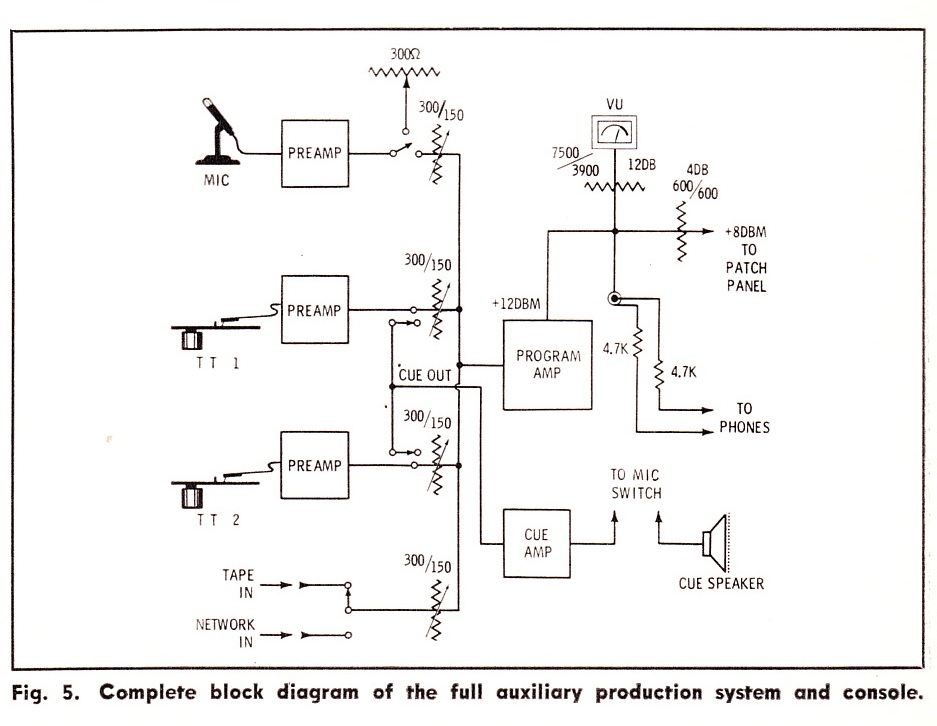 From BROADCAST ENGINEERING Mag, circa 1964, plans by one Robert Tiffany on the design and construction of a low-cost ‘standby’ broadcast console. Output amp stage uses my fav line output transformer, the UTC A-25: still unequaled among air-gapped plate:line transformers for low-frequency response. BTW, add a 600:60K mic input transformer to the front of this thing and you’ve got a pretty nice mic preamp with a LOT of gain.
From BROADCAST ENGINEERING Mag, circa 1964, plans by one Robert Tiffany on the design and construction of a low-cost ‘standby’ broadcast console. Output amp stage uses my fav line output transformer, the UTC A-25: still unequaled among air-gapped plate:line transformers for low-frequency response. BTW, add a 600:60K mic input transformer to the front of this thing and you’ve got a pretty nice mic preamp with a LOT of gain.
DOWNLOAD: Console_0001 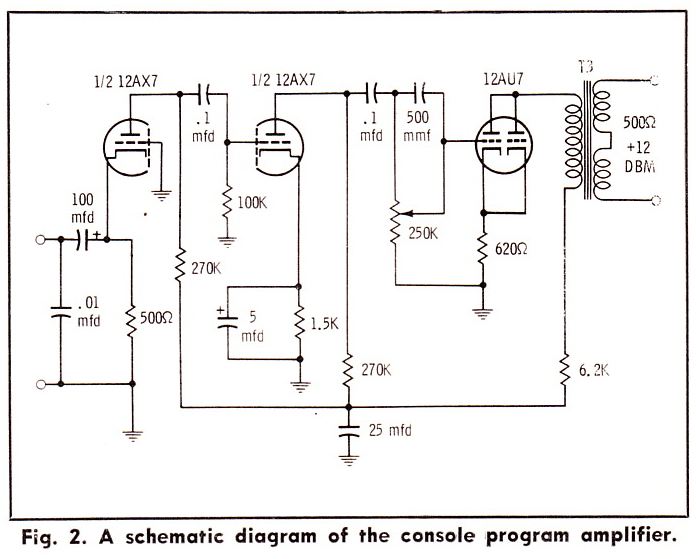
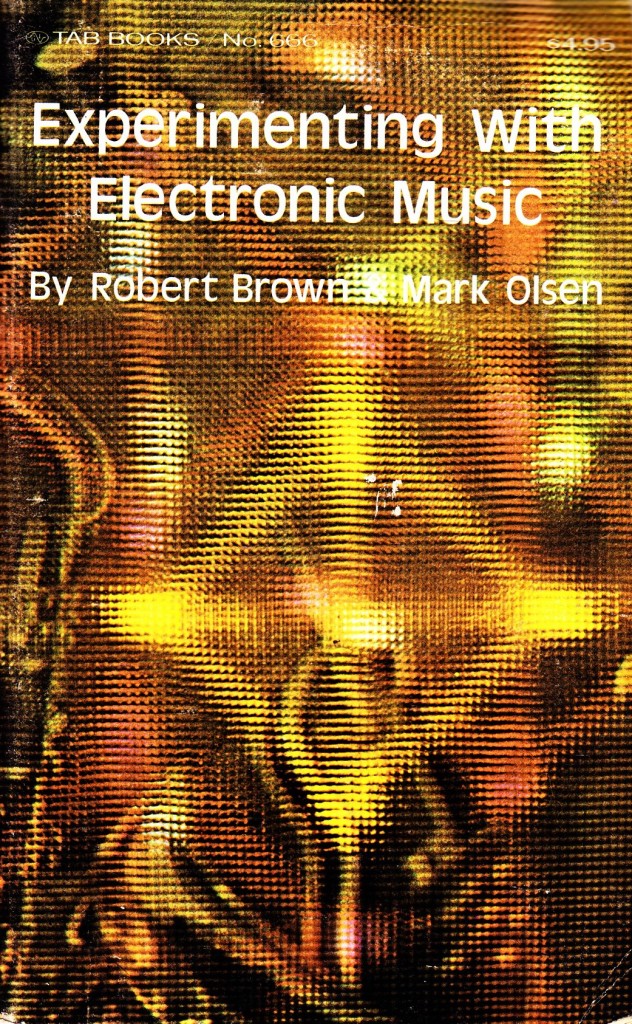 In NYC in the mid-seventies, an electronic-based band arose amongst all the guitar punks, a band that was known as much for their confrontational post-beatnik vocals as for the strange and intense sounds that emanated from their famously homemade electronic sound equipment. A band who has become, in the decades since, one of the few acts that is truly ‘required reading’ in the lexicon of avant-garde rock n pop. Or, as James Murphy so brilliantly puts it in his apocryphal tale of musical uber-taste, “I was there, in 1974, the first Suicide practices in a loft in New York City… I was working on the organ sounds…with much patience” (skip to 2:50… or, actually, don’t… this song kinda rules).
In NYC in the mid-seventies, an electronic-based band arose amongst all the guitar punks, a band that was known as much for their confrontational post-beatnik vocals as for the strange and intense sounds that emanated from their famously homemade electronic sound equipment. A band who has become, in the decades since, one of the few acts that is truly ‘required reading’ in the lexicon of avant-garde rock n pop. Or, as James Murphy so brilliantly puts it in his apocryphal tale of musical uber-taste, “I was there, in 1974, the first Suicide practices in a loft in New York City… I was working on the organ sounds…with much patience” (skip to 2:50… or, actually, don’t… this song kinda rules).
So yeah I am talking about Suicide. If you don’t know ’em, check ’em out… it is amazing+terrifying that this record came out in 1977… truly truly AOTT. And plainly awesome too. I really love this band, and they inspired me greatly in the early 2000s, when I was performing with a punk band in Brooklyn using an analog drum-machine rig based around some old Roland beatboxes, voltage controlled filters, and a CV-generating homemade theremin to control the whole thing.
LISTEN: The_Flesh_Gallows
This felt fairly fresh to me in the year 2001; so that fact that Suicide was doing this same thing 25 years early was mindblowing. I had to wonder; how the hell did these guys make all the stuff? Even in the year 2000, DIY’ing synth equipment was fairly unusual for rock musicians; but in 1975? That was like black magic! Well I think I found the grimoire.
NEways… kinda a long setup to what will be… the first OUT OF PRINT BOOK REPORT we’ve had in a while. And oh boy will there be more coming. I was recently at a really fascinating estate-sale somewhere in Marin County, California, where I met an elderly engineer who sold me a library of ancient audio-tech books and wished me luck on my travels… the pick of the litter was the above-depicted “Experimenting With Electronic Music,” by Robert Brown and Mark Olsen. Published in 1974, it is TAB books catalog number 666. No joke. This just keeps getting better.
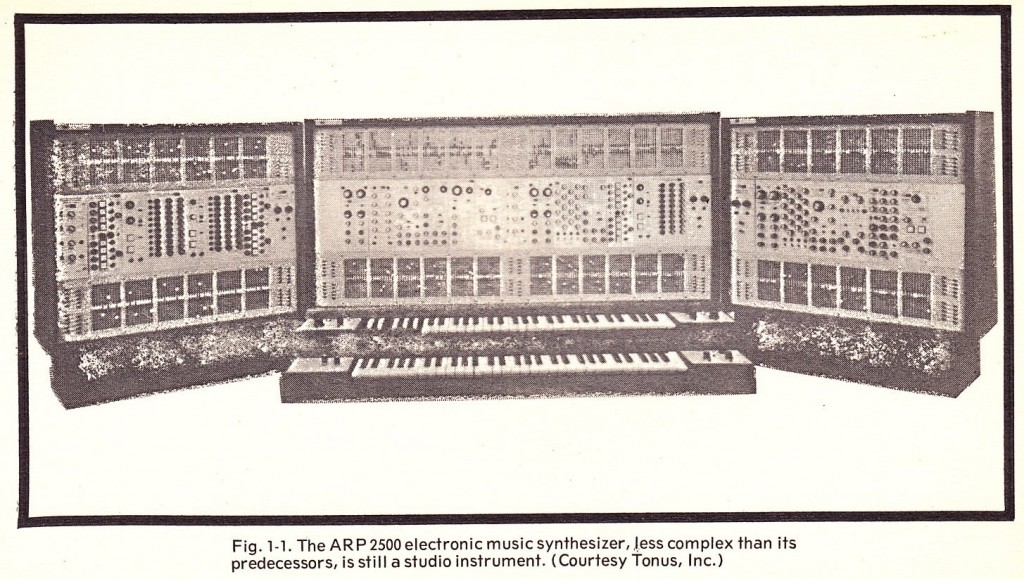 The book starts with some fairly uninteresting discussion of various commercially-available synthesizers circa ’74, but soon gets into a wealth of both schematics and ideas regarding DIY’d audio electronic circuits. Here’s the TOC:
The book starts with some fairly uninteresting discussion of various commercially-available synthesizers circa ’74, but soon gets into a wealth of both schematics and ideas regarding DIY’d audio electronic circuits. Here’s the TOC:
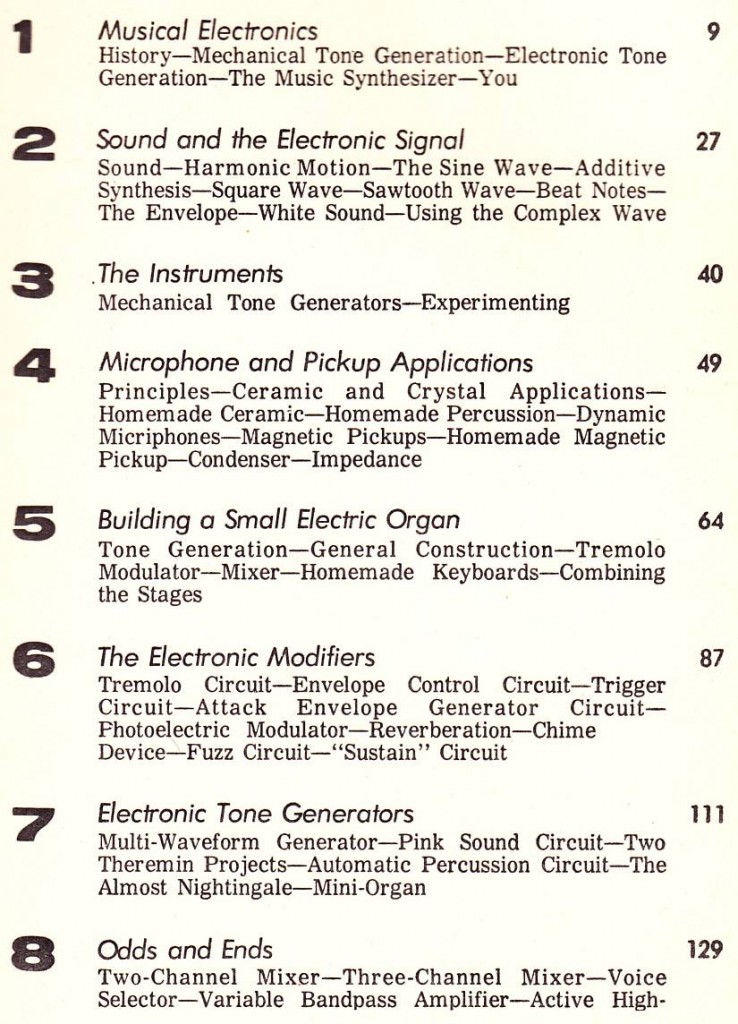 There’s a ton of great stuff in here, and while I honestly have no idea whether or not the particular transistors spec’d in these circuits are still available, I would imagine that there are subs available… even if you never build anything from the book, I think anyone with an interest in early electronic music will find it fascinating. Here’s a few projects that I plan to do at some point:
There’s a ton of great stuff in here, and while I honestly have no idea whether or not the particular transistors spec’d in these circuits are still available, I would imagine that there are subs available… even if you never build anything from the book, I think anyone with an interest in early electronic music will find it fascinating. Here’s a few projects that I plan to do at some point:
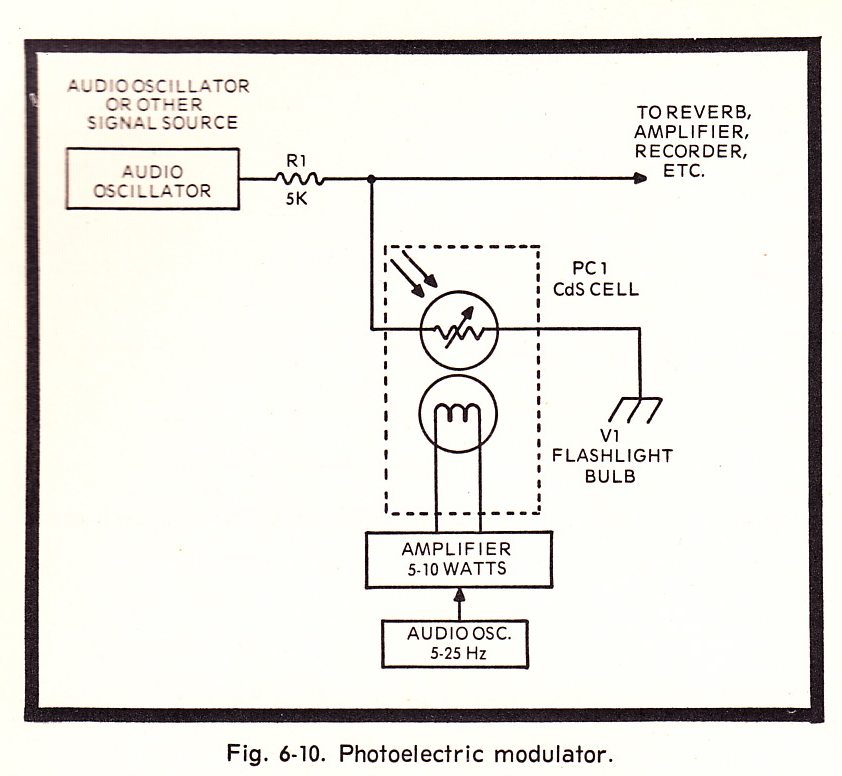
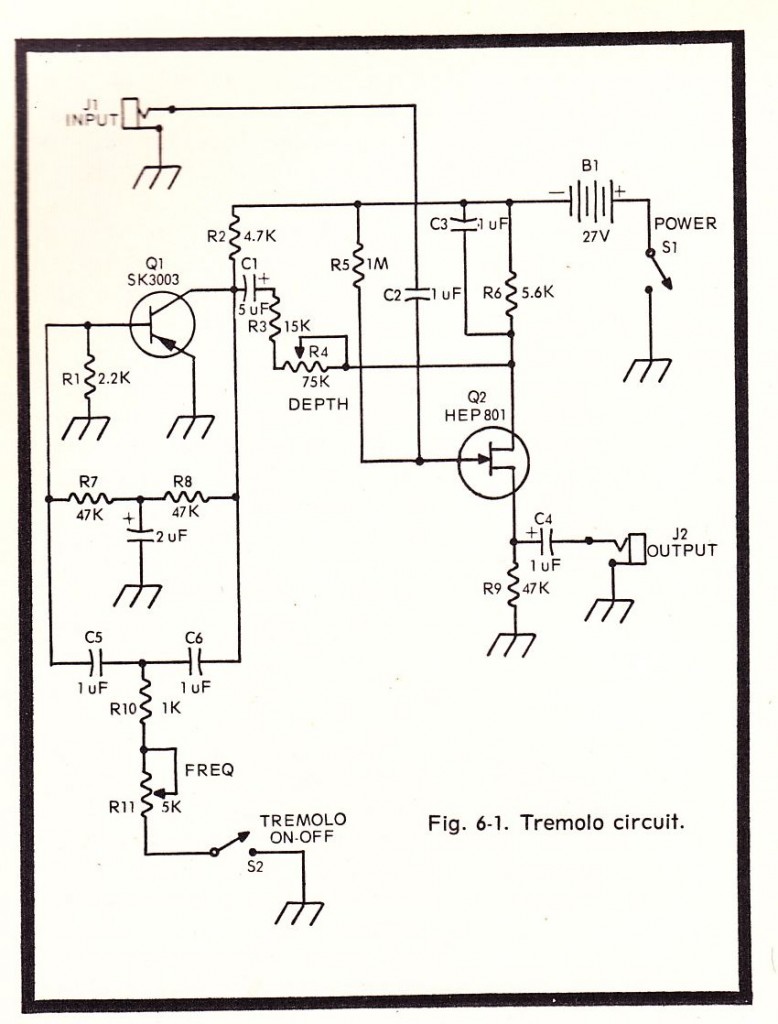
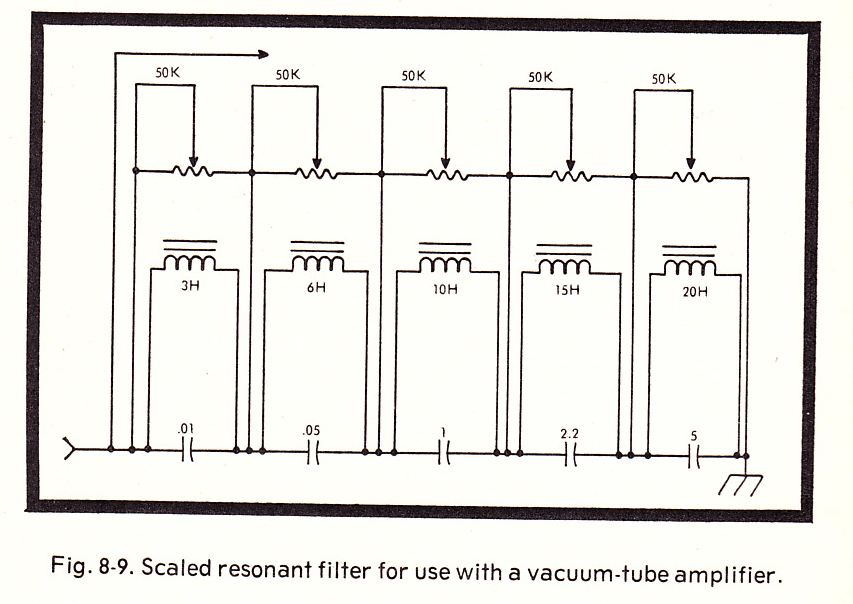 “Experimenting with Electronic music” is available from a few sellers on Abe Books. It ain’t cheap, but I’ve been digging for these sorta books for 20 years now and this is the first copy I ever came across.
“Experimenting with Electronic music” is available from a few sellers on Abe Books. It ain’t cheap, but I’ve been digging for these sorta books for 20 years now and this is the first copy I ever came across.
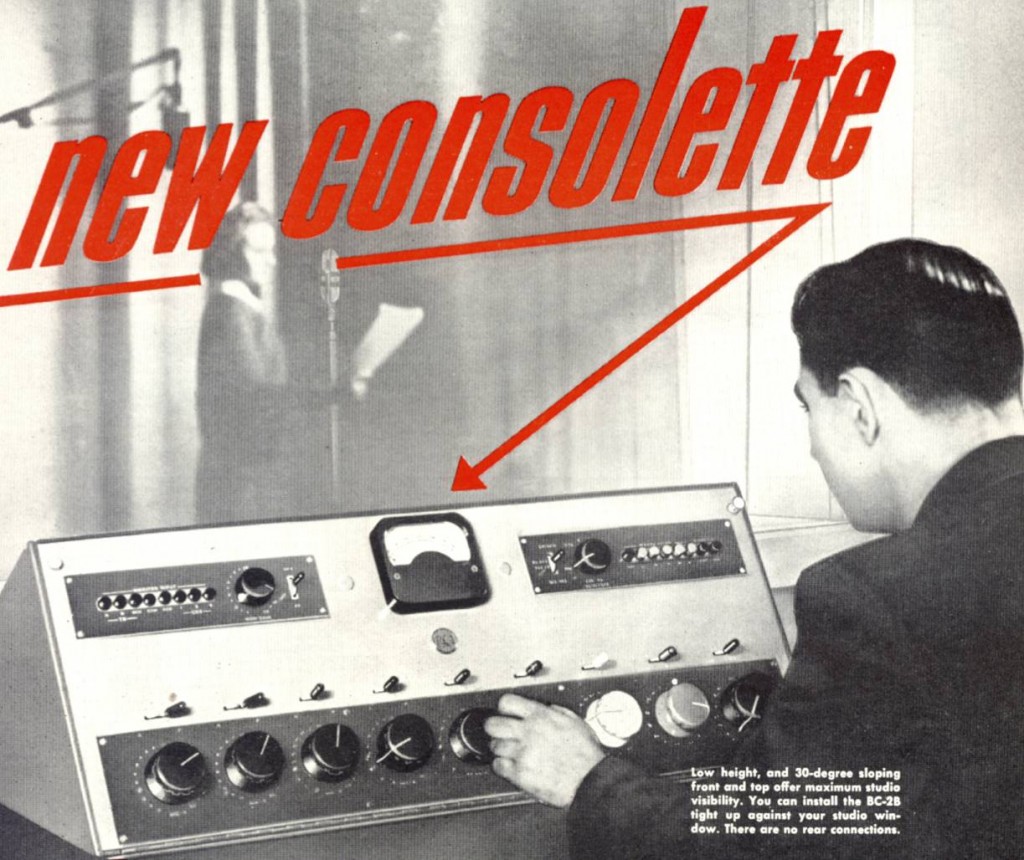 Reader T.F. sent me this scan from AUDIO ENGINEERING c. 1952: the introduction of the RCA BC-2B Console.
Reader T.F. sent me this scan from AUDIO ENGINEERING c. 1952: the introduction of the RCA BC-2B Console.
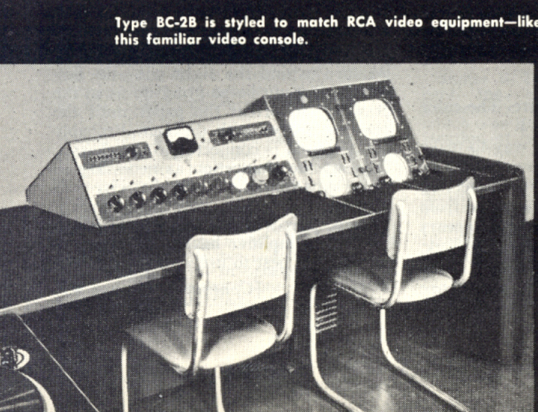
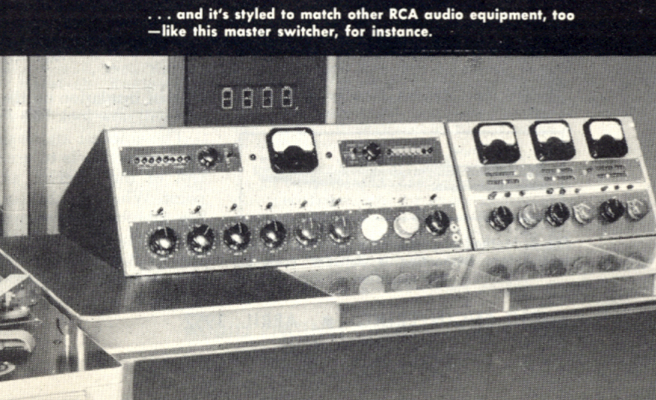
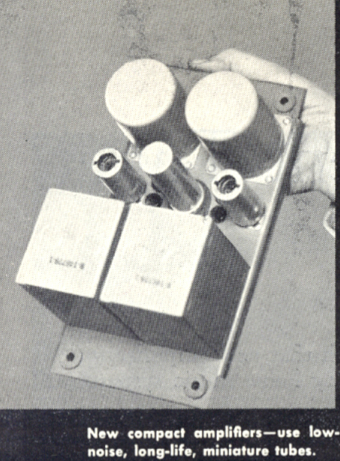 LEFT: The BC-2B incorporated the RCA MA-11241 dual mic pre-amp unit; a two-stage circuit, each channel used a single 12AY7 for, I would suppose, about 25 – 30 db of gain. The schem for the 11241 is posted below here. Notice that, similar to the earlier octal-pentode based RCA mic pres, the full B+ current flows through the output transformer; this severely limits your choice of output transformer: the only vintage full-fidelity units that I am aware of are the UTC A-25 and LS-27. Lundahl makes a modern unit that satisfies this spec, as does Hashimoto (HL-20K-6); very expensive pieces tho! Any of you fellas know of other 15k:600 1/2 watt transformers that handle 8ma unbalanced DC and still pass 40 – 20K?
LEFT: The BC-2B incorporated the RCA MA-11241 dual mic pre-amp unit; a two-stage circuit, each channel used a single 12AY7 for, I would suppose, about 25 – 30 db of gain. The schem for the 11241 is posted below here. Notice that, similar to the earlier octal-pentode based RCA mic pres, the full B+ current flows through the output transformer; this severely limits your choice of output transformer: the only vintage full-fidelity units that I am aware of are the UTC A-25 and LS-27. Lundahl makes a modern unit that satisfies this spec, as does Hashimoto (HL-20K-6); very expensive pieces tho! Any of you fellas know of other 15k:600 1/2 watt transformers that handle 8ma unbalanced DC and still pass 40 – 20K?
Here’s a dude that’s cloning the BC2B preamp; price is $650 for the preamp plus another $450 for the power supply. Assuming that the build-quality is good, $1100 is a pretty fair price for this thing; I know how much those Lundahls cost ( I use the same O/T in my BRDCSTR as well) plus phantom power is a pain in the ass to build in.
 Download a short article from 1962 by one F.H. Calvert on the subject of adding a vibrato circuit to any vacuum-tube audio amplifier:
Download a short article from 1962 by one F.H. Calvert on the subject of adding a vibrato circuit to any vacuum-tube audio amplifier:
DOWNLOAD: Vibrato
Above, the schematics. These are not plans for a stand-alone device: rather this circuit (the schem on the left) is intended to be added to any resistance-coupled voltage amplification stage (for instance, the circuit on the right). It requires an extra single hi-mu triode section. The author suggests 1/2 a 6SC7 or 1/2 a 6SL7, but it would presumably work just as well with 1/2 a 12AY7 or 1/2 a 12AT7, with maybe just a slight change to the 2.2K cathode bias resistor (can anyone tell me what the single-triode sub-miniature equivalent of the 12AY7 and the 12AT7 are? Do they even exist?) I have not built this circuit yet so no promises. A few observations tho: I find it hard to believe that this is actually a vibrato device; it seems like it’s likely a tremolo circuit. It looks very similar, in fact, to the trem circuit in the ole 18watt Marshall combo. Also: if it’s worth building, it’s certainly worth adding the speed variation pot. Contrary to what the author suggests, my best guess would be to replace the left-most 2M resistor with a 2M pot PLUS a fixed 470K resistor in series. Def gonna try adding this to the next Recycled Champ that I turn out.
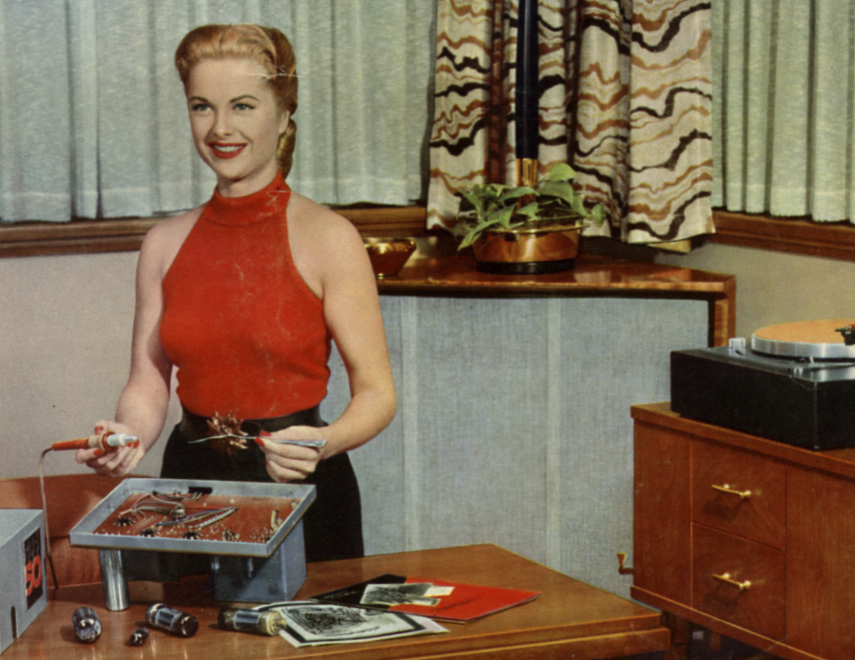 Download a two-page scan of Radio & Television News, August 1957, featuring screen-star Martha Hyer and her DIY audio-hobby.
Download a two-page scan of Radio & Television News, August 1957, featuring screen-star Martha Hyer and her DIY audio-hobby.
DOWNLOAD: Martha Hyer 1957 Radio TV News
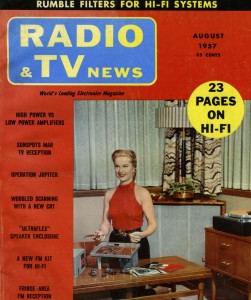 Hyer is shown above in the midst of assembling her PERI 50, a mono hi-fi amp of the late 50s. You can download the schematic for the PERI 50 here: DOWNLOAD PERI 50 SCHEM. It’s a 50-watt ultralinear amp of extremely simple, efficient design.
Hyer is shown above in the midst of assembling her PERI 50, a mono hi-fi amp of the late 50s. You can download the schematic for the PERI 50 here: DOWNLOAD PERI 50 SCHEM. It’s a 50-watt ultralinear amp of extremely simple, efficient design.
Thanks to PS dot com reader T.F. for providing this article. This piece comes as contrast to typical Women-In-Fifties-HiFi depiction, examples of which are in this series of images. Despite the fact that ‘soldering-your-own-amplifier’ falls much closer to the wine-rack rather than gun-rack end of the macho spectrum, there was apparently nothing in American culture of the 50’s that could not be bro-ified, as this charming shop-apron of the era makes apparent:
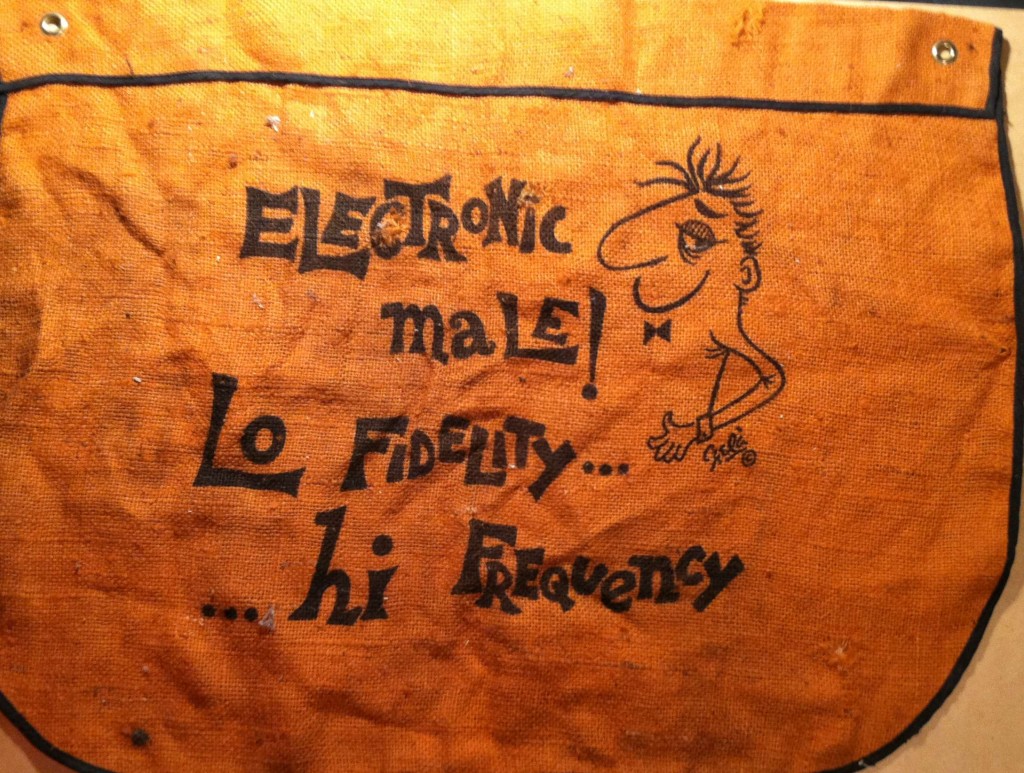 Despite its intended message of unapologetic philandering and stamina, I kinda of get the impression that dude’s workmanship is shoddy and he has a shrill voice. Maybe not the best image to project. Thank god for social progress. And on that note: does this website have any female readers who build/service audio equipment? Drop us a line and represent…
Despite its intended message of unapologetic philandering and stamina, I kinda of get the impression that dude’s workmanship is shoddy and he has a shrill voice. Maybe not the best image to project. Thank god for social progress. And on that note: does this website have any female readers who build/service audio equipment? Drop us a line and represent…
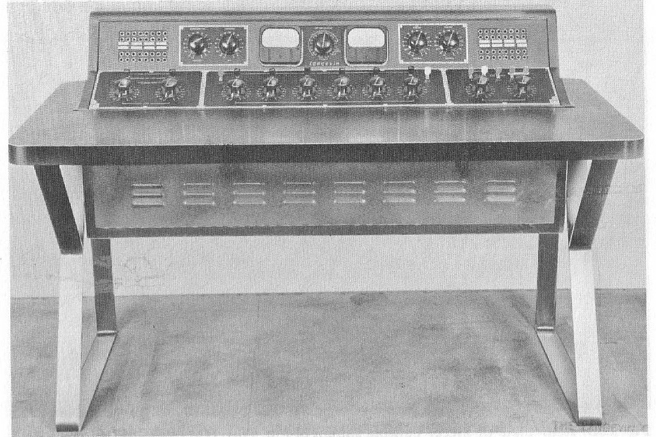 Langevin stereo console circa 1959
Langevin stereo console circa 1959
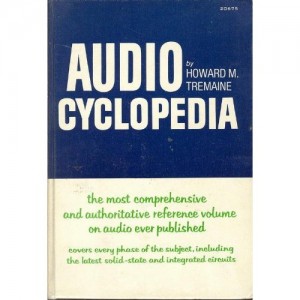 Today: from the “Audio Cyclopedia,” Howard Tremaine, 1959: a quick visual survey of professional mixing consoles in service in 1959. A PS Dot Com reader turned me on to the “Audio Cycolopedia”; many copies of this 1300ppp volume are available on Amazon and eBay starting at around $80; based on the number available, though, i feel like there’s a $1 yard-sale copy waiting for me just around the bend… When the moment presents itself, we’ll be sure to run an Out-Of-Print-Book Report.
Today: from the “Audio Cyclopedia,” Howard Tremaine, 1959: a quick visual survey of professional mixing consoles in service in 1959. A PS Dot Com reader turned me on to the “Audio Cycolopedia”; many copies of this 1300ppp volume are available on Amazon and eBay starting at around $80; based on the number available, though, i feel like there’s a $1 yard-sale copy waiting for me just around the bend… When the moment presents itself, we’ll be sure to run an Out-Of-Print-Book Report.
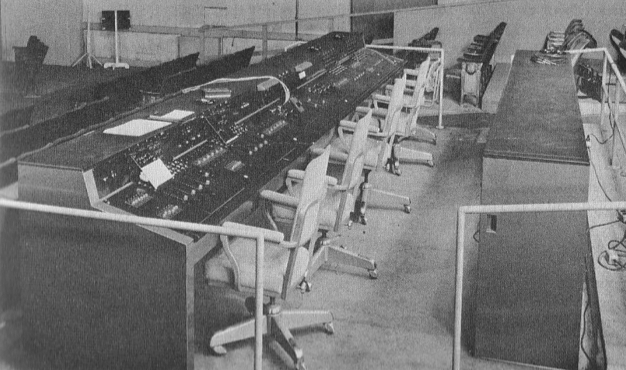 A Westrex console built for Todd-AO
A Westrex console built for Todd-AO
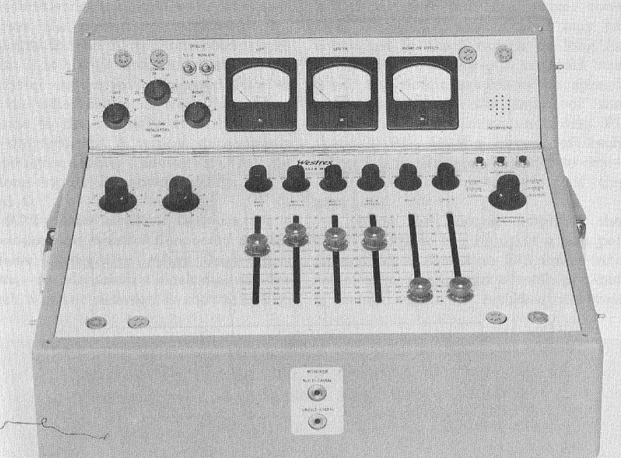
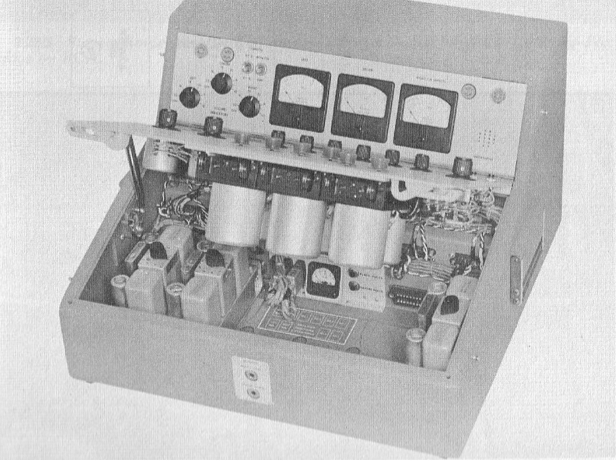 The Westrex Portable Stereo Mixer, inside+out
The Westrex Portable Stereo Mixer, inside+out
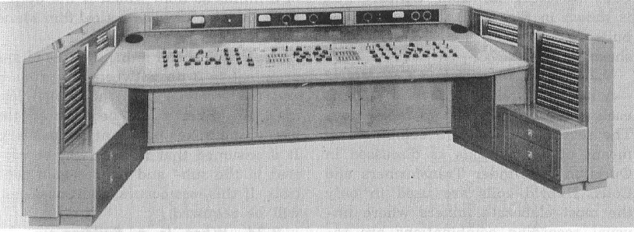 RCA Stereo Console built for 20th Century Fox
RCA Stereo Console built for 20th Century Fox
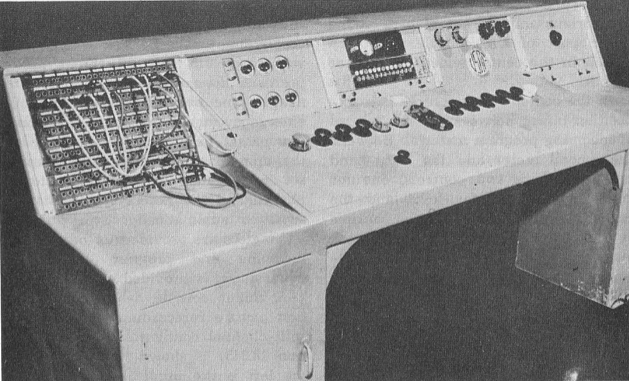 A ten-channel stereo console built for the production of USAF training films
A ten-channel stereo console built for the production of USAF training films
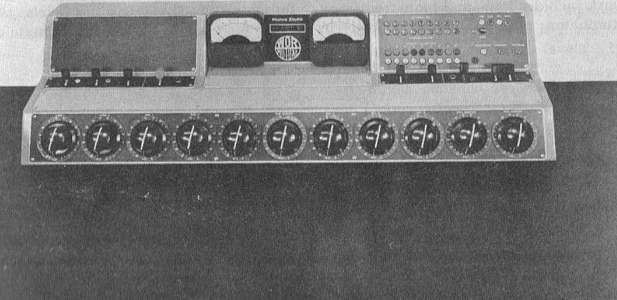 An eight-channel Western Electric console
An eight-channel Western Electric console
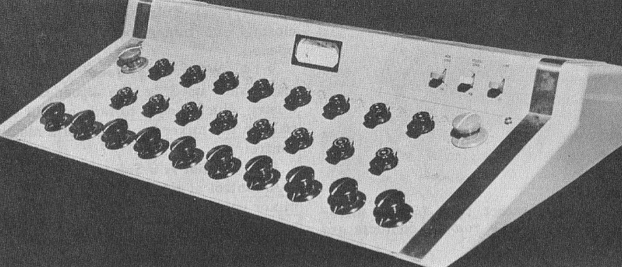 Cinema Engineering Console with integral channel equalization. These consoles were apparently introduced in 1951…
Cinema Engineering Console with integral channel equalization. These consoles were apparently introduced in 1951…
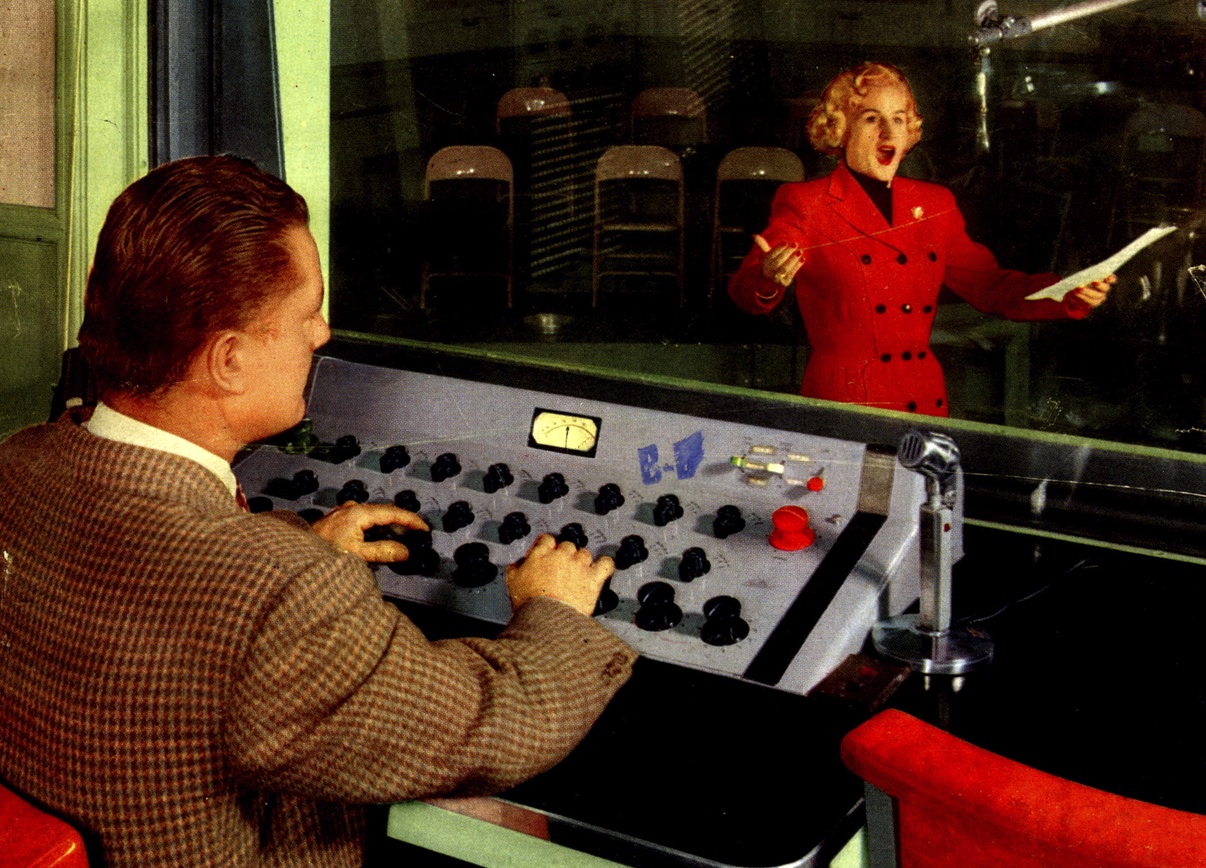 …as seen in this image from Radio & Television News, 1951. We’re looking at Capitol Records’ studio in this image.
…as seen in this image from Radio & Television News, 1951. We’re looking at Capitol Records’ studio in this image.
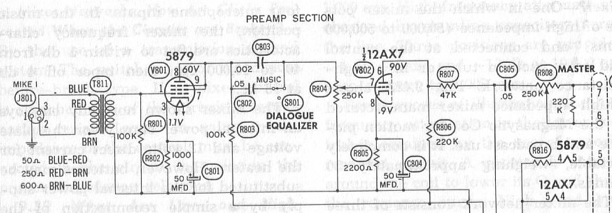 “Audio Cyclopedia” presents a range of material in an easy-to-read manner suitable for technical and non-technical persons alike; that being said, the book does not shy away from some very useful circuit data, such as the above-depicted Magnasync mixer schematic. I have been wondering for some time what the proper way was to use a 5879 tube in triode mode: here we see: 100k plate resistor with 1K bias resistor. Easy…
“Audio Cyclopedia” presents a range of material in an easy-to-read manner suitable for technical and non-technical persons alike; that being said, the book does not shy away from some very useful circuit data, such as the above-depicted Magnasync mixer schematic. I have been wondering for some time what the proper way was to use a 5879 tube in triode mode: here we see: 100k plate resistor with 1K bias resistor. Easy…